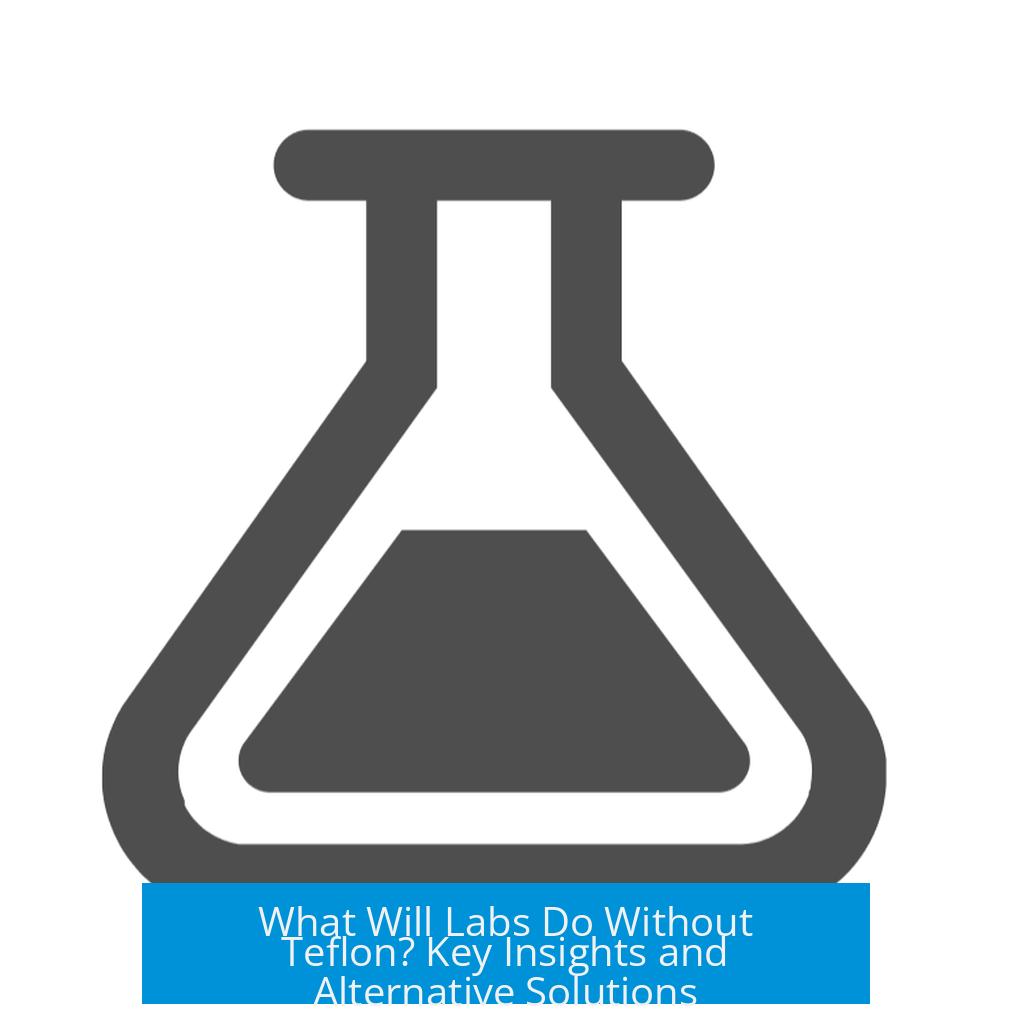What Will Labs Do Without Teflon?

Laboratories will likely continue to rely on Teflon (PTFE) and related fluoropolymers due to their unmatched chemical resistance and versatility; outright bans are improbable in industrial or research settings, though limited restrictions or consumer product regulations may occur. Alternatives exist but have notable drawbacks, forcing labs to adapt materials and practices rather than eliminate PTFE abruptly.
Understanding Teflon’s Regulatory Status
Teflon, a trademark for polytetrafluoroethylene (PTFE) and related fluorinated polymers, remains a cornerstone material in labs and industry. Despite growing public scrutiny around PFAS (per- and polyfluoroalkyl substances), no regulatory framework currently mandates a comprehensive ban on Teflon for lab or industrial uses.
- The primary concern targets consumer items, such as non-stick cookware coatings, with possible restrictions where Teflon might enter the food chain.
- Laboratories relying on PTFE for chemical resistance, such as those using hydrofluoric acid (HF) for dissolution, will likely receive exemptions or transitional allowances.
- Authorities face legal hurdles and long timelines to restrict manufacturing, making immediate prohibitions unlikely.
- Production remains stable globally, and industrial usage continues due to the lack of equivalent substitutes.
Why Labs Depend on Teflon
Teflon’s exceptional chemical inertness, thermal stability, and low friction characterize its widespread lab applications. PTFE-coated stir bars, boiling chips, tubing, and beakers are common tools in chemical, environmental, and materials research laboratories.
Alternative polymers or materials often fail to match PTFE’s broad spectrum performance:
- Silicone-based materials provide some resistance but do not universally withstand harsh chemicals like PTFE.
- Other fluoropolymers such as FEP (fluorinated ethylene propylene) or PVDF (polyvinylidene fluoride) serve niche roles but lack PTFE’s versatility.
- Material substitutions require rigorous testing for compatibility with specific experimental conditions.
Loss of PTFE would force labs to manage a more complex inventory, necessitating expert knowledge of chemical compatibility for materials previously replaced by PTFE’s ubiquity.
Potential Adjustments in Laboratory Practices
In a hypothetical scenario without Teflon, laboratories would explore several adaptive strategies to maintain operational integrity:
- Stockpiling Critical Materials: Labs might hoard existing PTFE supplies to bridge the gap while alternatives improve.
- Material Diversification: Employing multiple types of tubing, containers, and seals, each suited for specific chemicals instead of the “one-size-fits-all” PTFE.
- Enhanced Training: Technicians and researchers would need better education on polymer resistances and limitations.
- Research and Development: Accelerated efforts to identify or engineer new polymers mimicking PTFE’s chemical and physical properties.
However, these measures would increase operational complexity, raise costs, and potentially introduce new failure modes due to less inert or durable materials.
Exploring Replacement Materials
| Material | Pros | Cons |
|---|---|---|
| Silicone-based Polymers | Good thermal stability; some chemical resistance | Lower resistance to aggressive solvents; degradation under certain conditions |
| FEP (Fluorinated Ethylene Propylene) | Good chemical resistance; flexible | Less thermally stable than PTFE; more costly |
| PVDF (Polyvinylidene Fluoride) | Good mechanical strength; chemical resistance | Less inert than PTFE; sensitive to strong bases and oxidizers |
| CTFE (Chlorotrifluoroethylene) | Good barrier properties; chemical resistance | Limited availability; specialty use |
Research programs employ advanced computational methods, including artificial intelligence, to screen millions of candidate materials for performance akin to PTFE. However, no replacement matches PTFE’s full profile perfectly.
Broader Implications of Regulatory Trends
Policies concerning PFAS compounds reveal a divide between consumer protections and industrial needs:
- Consumer product regulations (e.g., bans on non-stick cookware or water-repellent textiles) are progressing faster than industrial restrictions.
- Lab and manufacturing exemptions will likely persist due to the essential nature of fluoropolymers in safe and effective chemical handling.
- Global manufacturing may shift to regions with less stringent regulations, complicating environmental impacts and supply chains.
- Long legal and economic battles accompany any attempt to limit PFAS production or use due to their industrial importance and market value.
Scientists and stakeholders caution against uninformed bans driven by public misunderstanding of chemical permanence and toxicity. A nuanced approach emphasizing waste management and corporate accountability emerges as a favored path forward.
Summary: What Labs Will Do Without Teflon
- Complete loss of Teflon in laboratory environments is not imminent; existing uses will continue with potential restrictions limited to consumer goods.
- Laboratories will diversify materials and increase expertise on chemical compatibility if tighter regulations emerge.
- Alternatives exist but remain less effective, more expensive, or specialized, raising operational complexity.
- Global supply chains and manufacturing practices may adapt to regulatory pressures, maintaining material availability.
- Investment in research for new materials mimicking PTFE’s properties is active but incomplete.
- Informed policies balancing environmental safety with practical industrial needs are critical to avoid unintended consequences.
Key Takeaways
- Teflon (PTFE) remains indispensable in labs due to superior chemical resistance and versatility.
- Regulatory bans focus on consumer products; industrial and research exemptions continue.
- Alternatives like silicone or other fluoropolymers offer partial but imperfect replacements.
- Labs must prepare for diversification of materials and enhanced chemical compatibility knowledge.
- Policy complexity and global manufacturing influence the future availability of PTFE.
- Efforts to develop new materials continue but have not yet matched PTFE’s performance.





Leave a Comment